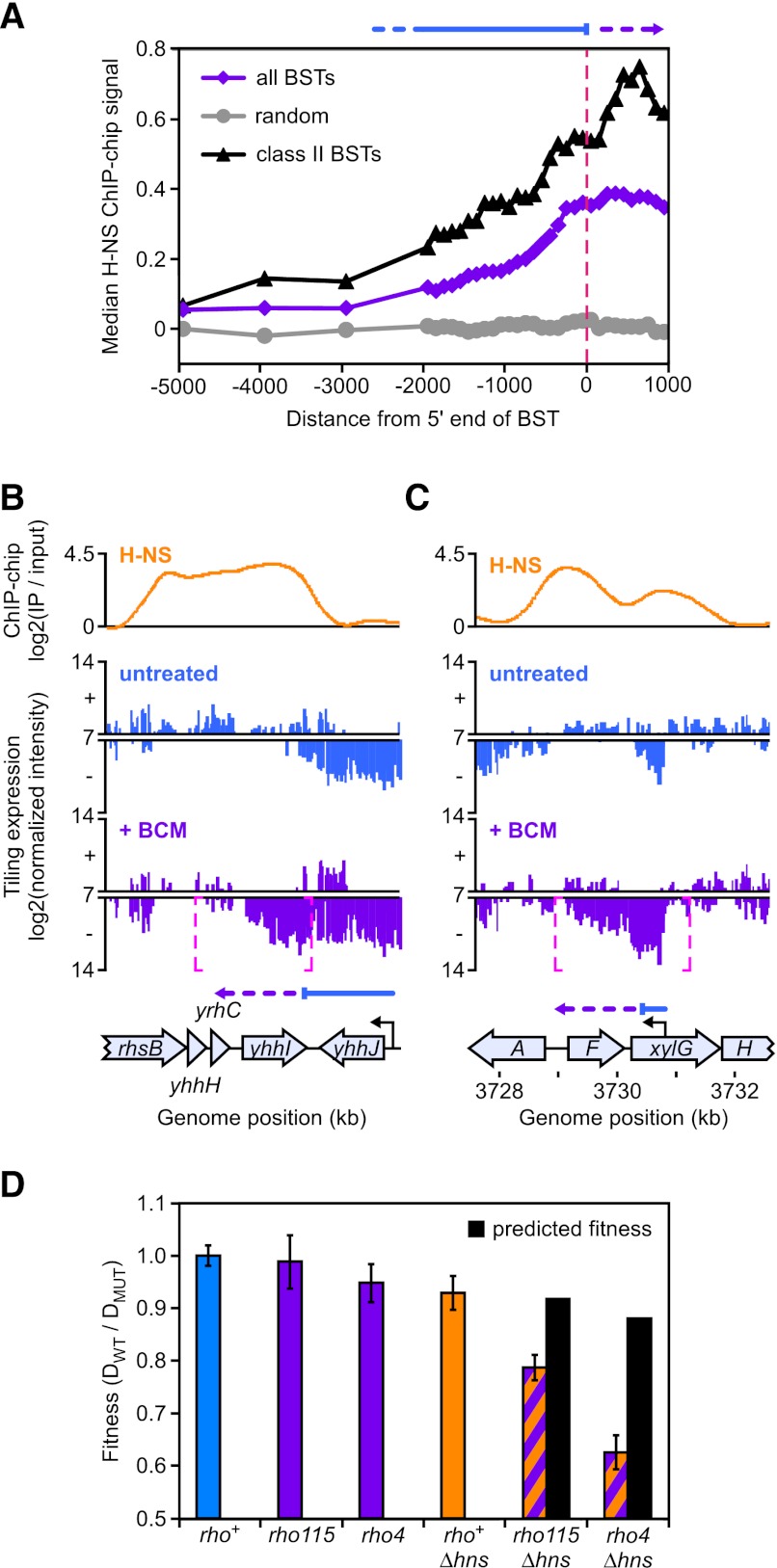Figure 4.
Spatial and functional associations between H-NS and Rho-dependent termination. (A) H-NS binding near Rho-dependent terminators. The median H-NS ChIP signal (see the Supplemental Material) is shown at specified distances from the 5′ end of all BSTs (violet), class II BSTs (black), or random chromosome positions (gray). (B) H-NS binding at the class I Rho-dependent terminator at the yhhJ locus. Colors are as in Figure 3, except that H-NS ChIP–chip data are shown in orange. Readthrough of the Rho-dependent terminator at the end of the yhhJ gene (indicated by the appearance of a BST shown as magenta dashed brackets) corresponds with a peak in H-NS ChIP–chip occupancy (orange). (C) H-NS binding at the class II Rho-dependent terminator within the xylG gene. Readthrough of the Rho-dependent terminator on the antisense strand of xylG corresponds with a peak in H-NS occupancy. (D) Genetic interactions between hns and rho. Fitness is expressed as the ratio of the doubling times (D) for wild-type (DWT = 24.75 ± 0.33 min) versus mutant cells in liquid LB medium. Wild-type fitness is set at one. Predicted fitness of double mutants is based on the multiplicative model (fitness of mutant #1 × fitness of mutant #2 = predicted fitness of double mutant) (St Onge et al. 2007).

